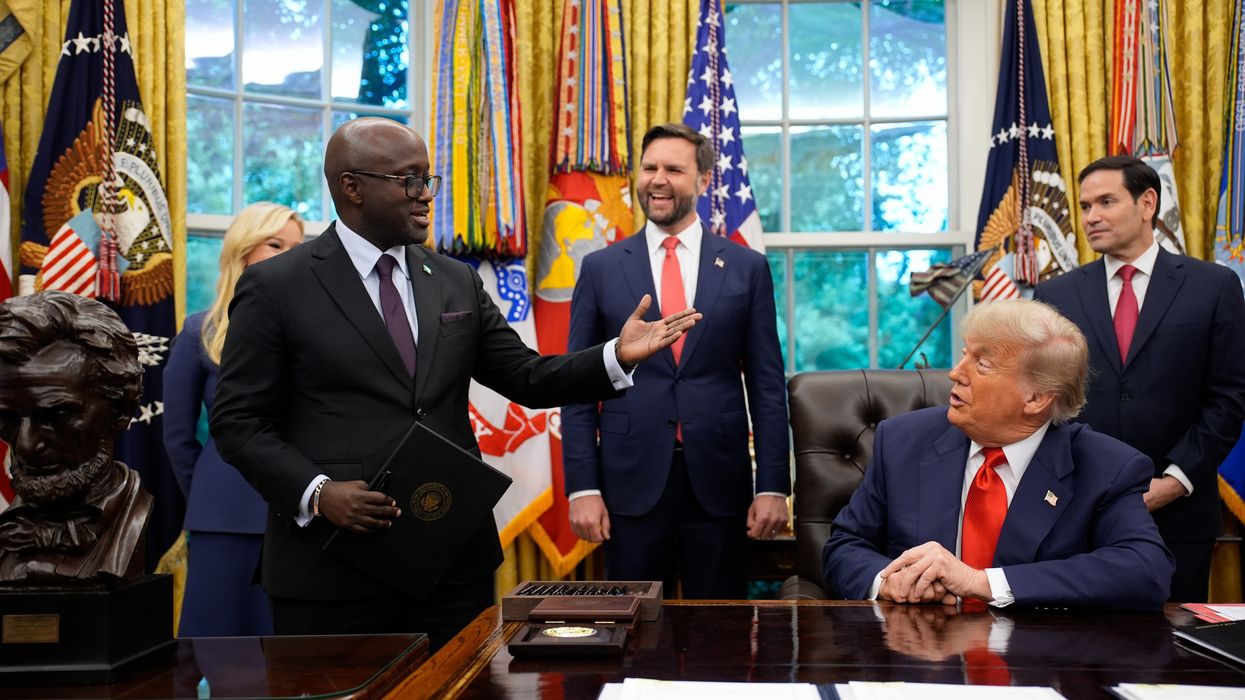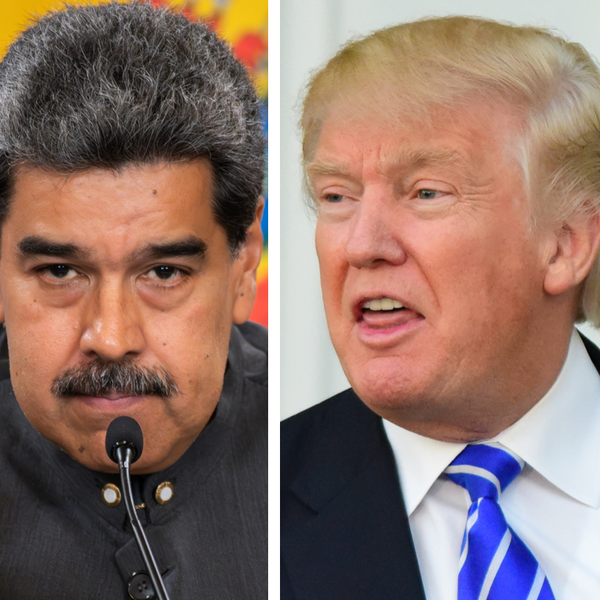In the pursuit of its geopolitical and economic interests, the United States has repeatedly supported the oppressive strategies of dictatorial governments abroad when these regimes have been challenged by widespread popular protests. In no region is this trend more apparent than the broader Middle East.
For decades, the United States has supported, funded, and often directly facilitated repressive tactics and oppressive strategies employed by different governments across the Middle East in places such as Saudi Arabia, Israel and Palestine, Bahrain, and others. Such U.S. efforts have reached new heights under the administration of Donald Trump, who has, for example, praised Egyptian President Abdel Fatah El-Sisi as his “favorite dictator,” stood in staunch support of Saudi Crown Prince Mohammed bin Salman following the murder of journalist Jamal Khashoggi, and supported illegal Israeli settlement expansion deeper into the occupied West Bank.
As protests continue to spread within the United States following the death of George Floyd due to police brutality, it appears that the strategies supported by America abroad — as well as tactics honed by various autocrats after years of repressing their own populations — are increasingly finding their way home to the United States.
Dictators often learn from one another. It appears that Donald Trump is not only beginning to adopt domestically the repressive strategies often supported by the U.S. abroad, but is also taking cues from the repressive playbooks of various Middle Eastern autocrats.
The rhetoric and actions adopted by the Trump administration following the murder of George Floyd eerily parallels the repressive tactics and deliberately divisive discourse advanced by autocratic regimes within the broader Middle East following the 2011 Arab Uprisings. Beyond these parallels, governmental elites often learn from other countries when considering how to best silence opposition and alternative narratives, while striving to ultimately preserve their own authority.
Employing strategies similar to those used by dictatorial governments in places such as Saudi Arabia, Egypt, Bahrain, and others, Donald Trump has increasingly expanded the repertoire of his coercive policies and rhetoric following the eruption of protests across the United States. Although the comparison between these cases certainly has its limitations — concerning differences in regime types, the differing scale of the protests, and the varying underlying grievances and demands of those protesting — juxtaposing these two cases will help exemplify the foundational strategies different governments employ to silence opposition, regardless of geography, culture, or religion.
The first parallel is the utilization of a militarized police force to quell the protests via intimidation and various subversive tactics. As was observed during the Arab Uprisings, security services in the United States have similarly been filmed indiscriminately firing tear gas and rubber bullets to disperse crowds, driving vehicles into groups of protestors, beating demonstrators, and employing a range of different coercive tactics in the attempt to “dominate” the streets, as Trump has urged police security services to do.
Over 60 million people across numerous U.S. cities have been placed under tight curfews as the government attempts to regain control. In conjunction with these security services are often paramilitary and unofficial bands of governmental supporters used to harass protestors.
Organizations such as the Basij in Iran and groups of pro-regime thugs such as the Shabiha in Syria were regularly used by these regimes in order to bolster the efforts of more traditional security services. The unofficial and mob-like nature of these organizations allows them to operate with less oversight due to being outside the framework of traditional U.S. law enforcement and a lack of official accountability to the state.
In the wake of the protests, Trump has publicly encouraged his supporters to mobilize against demonstrators. There have been several reports of Trump supporters counter-protesting and harassing crowds across the U.S. Moreover, there has been a rapid increase in the presence of unidentified armed personnel emerging at protest sites, brandishing no identification.
When traditional security services are no longer able to deter the mobilization, the military proper is often deployed in the hopes of taking control of the situation. Despite the fact that there are currently as many National Guard personnel activated in the U.S. as there are active duty troops in Iraq, Syria, and Afghanistan combined, Trump continues to threaten the deployment of active military personnel and to use the “unlimited power of the military” to control the demonstrators. In true dictatorial fashion, this rhetoric demonstrates that the Trump administration is acting under the belief that the military does not serve the people, but rather his personal agenda.
The second parallel is the demonization of those demonstrating and the attempt to construct alternative narratives in order to undermine their efforts. Trump has referred to those protesting as hoodlums, radicals, lowlife and scum, losers, anarchists, criminals, and thugs. However, most concerning is his increasing use of the “terrorism” scapegoat.
A tactic regularly used by regimes across the Middle East, the “terrorism/terrorist” label is repeatedly deployed in the attempt to demonize and delegitimize any and all forms of opposition. Trump has referred to those demonstrating as domestic terrorists, and recently announced that he will be labeling Antifa as a terrorist organization (it’s worth nothing here that “Antifa,” or anti-fascism, is more of a movement against white supremacy and other right-wing extremists and not an organization).
This rhetoric often provides governments with a lucrative scapegoat: by labeling those protesting as terrorists, intense countermeasures taken to quell their actions are therefore framed as legitimate operations designed to belay enemies of the state as opposed to peaceful demonstrations calling for change.
The third parallel is the “strongman act” currently exemplified by Trump and his attempt to present himself as the only legitimate alternative to “lawlessness and chaos.” This tactic was frequently used by regimes across the Middle East that framed the situation as a choice between either “terrorists and criminals” (i.e. those demonstrating) or “law and order.” Trump has repeatedly touted the phrase “law and order,” arguing that the measures his administration is taking are the only thing keeping the country from devolving into lawlessness. He has threatened those demonstrating by vowing to establish “domination” through “overwhelming force,” including “vicious dogs” and the “most ominous weapons.”
Finally, the fourth parallel is the manipulation of identity politics to shore up his own support base. Whether it be the exploitation of clan, sectarian, locational, or familial identities, the manipulation of identity politics was a staple of the divide-and-rule strategies used by different Middle Eastern regimes to undermine unified opposition.
This appeal to an ideational base was most apparent in Trump’s march to the historical St. John’s Episcopal Church where he posed for a picture holding a bible. White Christian evangelicals, a key support base for the president, were quick to hail Trump’s move, arguing that the president “wears the armor of God.” Eerily similar to how regimes in countries such as Saudi Arabia or Iran often seek to justify their repressive actions under the cloak of religion, Trump too has sought to construct a veneer of legitimacy for his actions while speaking to his support base.
The broad strategies of various Middle Eastern autocrats designed to undermine opposition — often supported, funded, and facilitated by the United States — are increasingly being used by Washington against demonstrators following the murder of George Floyd. These comparisons show how governmental elites of all types often seek to draw from the proverbial “dictator’s handbook” when presented with a challenge to their own authority. It is yet to be seen whether the next chapter of the dictator’s handbook — the firing of live ammunition into crowds — will find its way into the streets of America. However, one thing is for certain: the coercive and repressive strategies regularly supported by Washington abroad have found their way home.
















